Jacksonville, Fl. — The “Buresh Bottom Line”: Always be prepared!.....First Alert Hurricane Survival Guide... City of Jacksonville Preparedness Guide... Georgia Hurricane Guide.
STAY INFORMED: Get the * FREE * First Alert Weather app
FREE NEWS UPDATES, ALERTS: Action News Jax app for Apple | For Android
WATCH “Talking & Tracking the Tropics: The Science Behind the Season”
WATCH “Preparing for the Storm”
READ the First Alert Hurricane Center “Survival Guide”
***** ALWAYS CHECK & RE-CHECK THE LATEST FORECAST & UPDATES! *****
The last NHC advisory on Delta was issued Saturday.....
Recap: A Caribbean tropical wave was upgraded to tropical depression #26 last Sun. night... to tropical storm “Delta” early Monday then to a hurricane Monday evening while moving west/NW across the Caribbean south & southwest of Jamaica. In less than 48 hours, Delta went from a depression to a Cat. 4 hurricane by late Tue. morning. According to Phil Klotzbach, this is the fastest intensification - 70 mph in 24 hours - of an Atlantic tropical cyclone since Wilma in 2005. Like has happened so often this season, this is the fastest ever to the 25th storm beating by more than a month the previous record of Nov. 15th, - take a guess! - 2005. The tiny eye - 5 nautical miles across Tue. - can suddenly contract & allow for strengthening (such as occurred midday Tue.) but such a compact hurricane is also more susceptible to outside interference that can cause fast weakening as we saw Tue. night. At one point, hurricane recon reported the eye had completely collapsed only to see some reorganization with a renewed eye just before landfall. In any case, landfall was about 6:30am EDT Wed. on the far northeast of the Yucatan Peninsula near Cancun (at Puerto Morelos) where sustained winds were near 85 mph & a minimum central pressure of 972 mb was measured. This is a record 10th U.S. hit by a tropical cyclone beating the record of 9 in 1916. Map below courtesy Dr. Phil Klotzbach:
The Yucatan Peninsula was little more than speed bump for Delta as the fast-moving tropical cyclone moved over the warm water of the Southern Gulf of Mexico Wed. afternoon & rather quickly reorganized & strengthened. Delta reached its true peak intensity with a classic appearance on satellite data Thu./Thu. night while the hurricane also expanded its wing span (wind field) & turned more north. Delta made landfall as a Cat. 2 with winds near 100 mph about 7pm EDT near Creole, Louisiana about 10 miles east of Cameron - site of Cat. 4 Laura’s landfall in late Aug.
A clear alleyway became established that took Delta on a curved path from the Southern through Western Gulf to the Louisiana coast just east of Cameron & well west of New Orleans followed by a sharper turn northeast from Louisiana to Tennessee. Yet another near miss for Houston & New Orleans. Virtually no impacts for Houston... & relatively minimal - all things considered - impacts for New Orleans. Lake Charles (again!), Alexandria & Baton Rouge had significant wind & rain with measured rainfall as high as at least 18 inches!
Delta did indeed feel the effects of increasing shear out of the southwest as the hurricane increased its forward speed. Ocean temps. were not as warm as the Caribbean/far Southern Gulf & there were the typical increased effects of friction upon approach to landfall. Plus some dry air was pulled into Delta as it approached land & the underside (southern quadrant) quickly became devoid of much rain at/near landfall. The eye broadened late Friday & opened up on it south side as the central pressure steadily increased. Still.... Delta was a large hurricane marching steadily north/northeast on its final journey to the coast. While Delta was off its peak when it hits Louisiana & nearby areas, the hurricane still managed a very dangerous storm surge near & to the east of the eye that measured near at least 10 feet.
The cooler shelf water was very evident over the far Northern Gulf:
The proximity of Delta to where Cat. 4 hurricane Laura came ashore in late Aug. is uncanny:

Still some heavy rain from Delta’s remants for parts of the Southeast U.S., Appalachians & Mid Atlantic (in tandem with a frontal boundary):




The upper level (500 mb) forecast from this past Friday nicely shows the approaching trough helping to steer & accelerate Delta north then northeast around the western edge of this season’s persistent upper level high over & near Fl. (our “protector” while steering many tropical cyclones into the Gulf then Gulf Coast):
October tropical cyclone origin points are clustered over the Caribbean, Gulf of Mexico & SW Atlantic:
Atlantic Basin wave forecast for 24, 48 & 72 hours respectively (major wave action at Fl./Ga. beaches through early next week due to persistent brisk onshore flow (high pressure to the north) combined with easterly swells from distant Teddy:




The Caribbean/Gulf of Mexico & SW Atlantic will probably remain an area to keep an eye on over the next couple of weeks (climatologically favored too).
In the meantime, a couple of active tropical waves have moved off the coast of Africa. Something to keep an eye though shear is pretty strong overall....





:quality(70)/cloudfront-us-east-1.images.arcpublishing.com/cmg/WW5AJL3ARQUGDQMAQUNSFX4CLE.jpg)
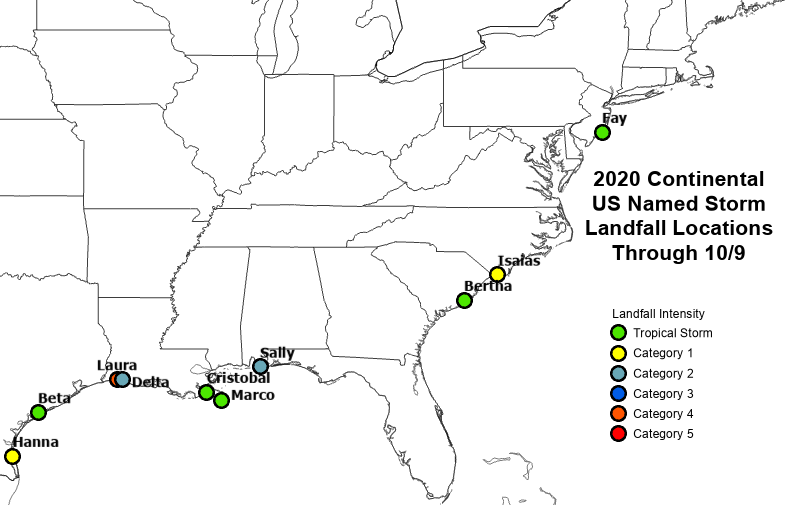
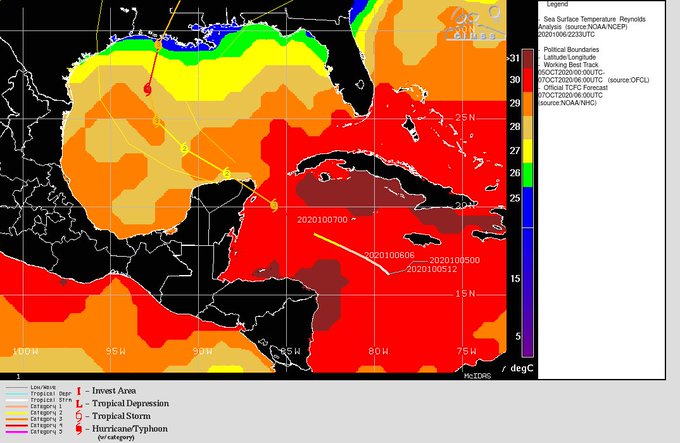
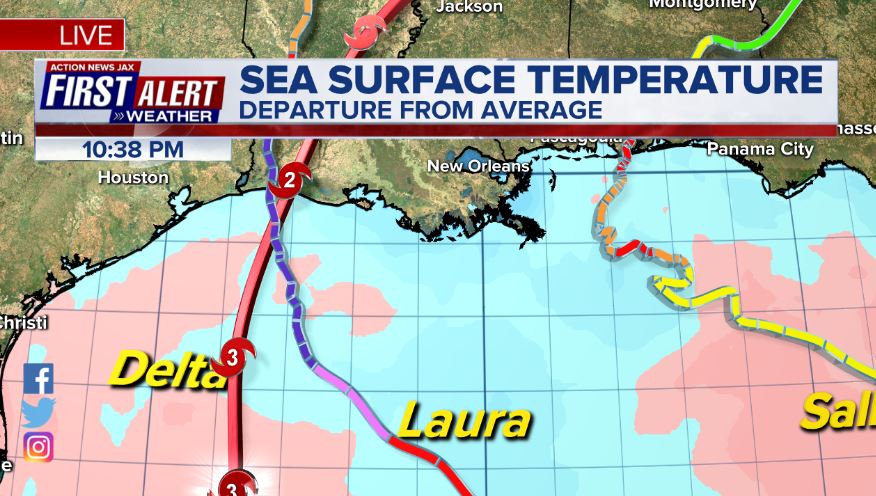
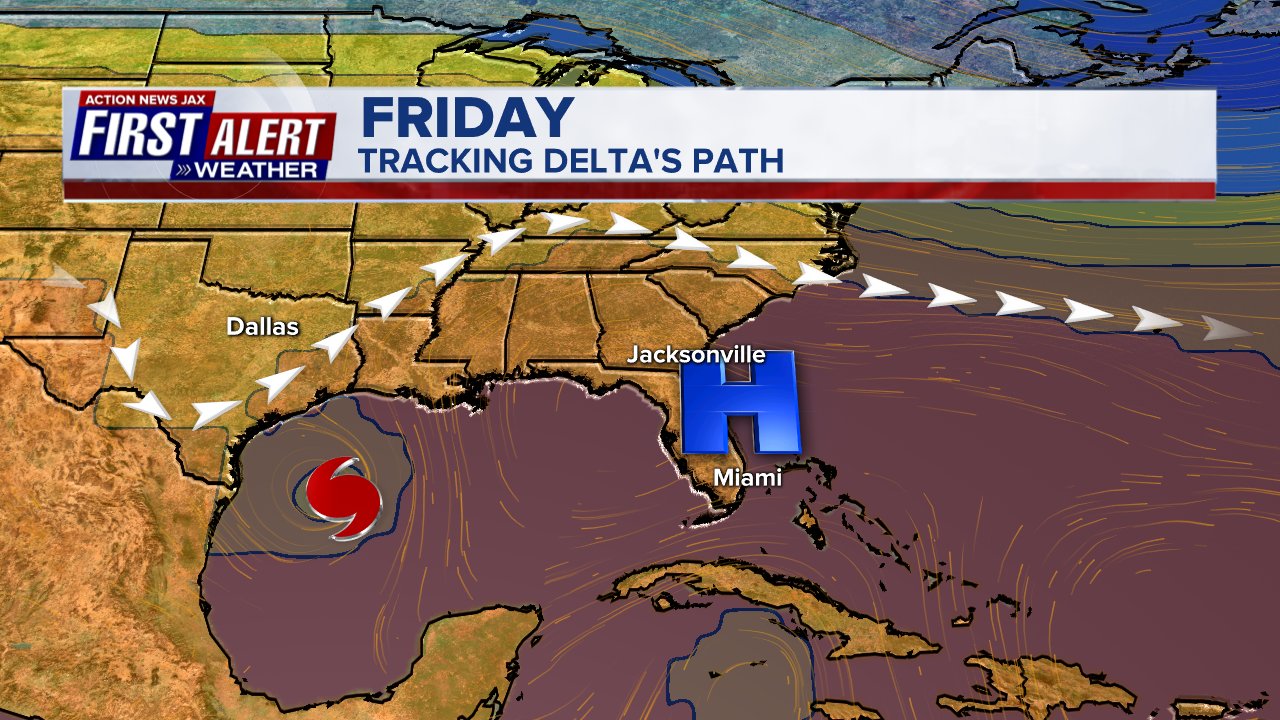
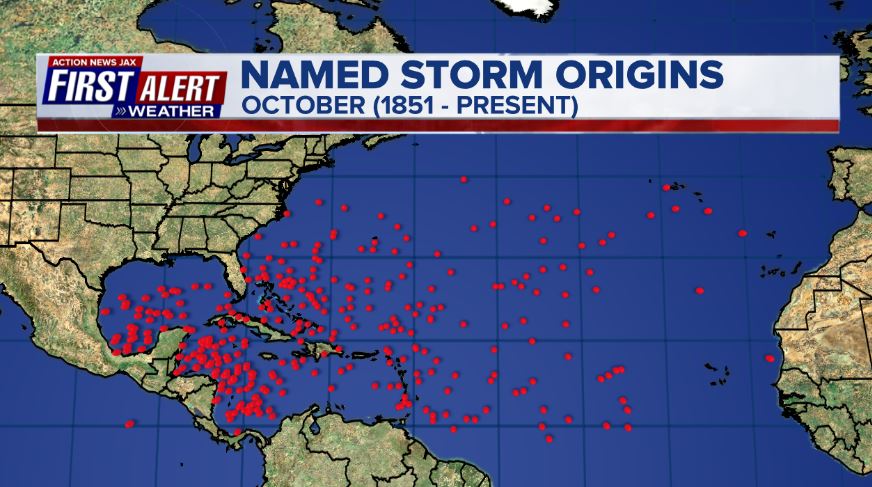
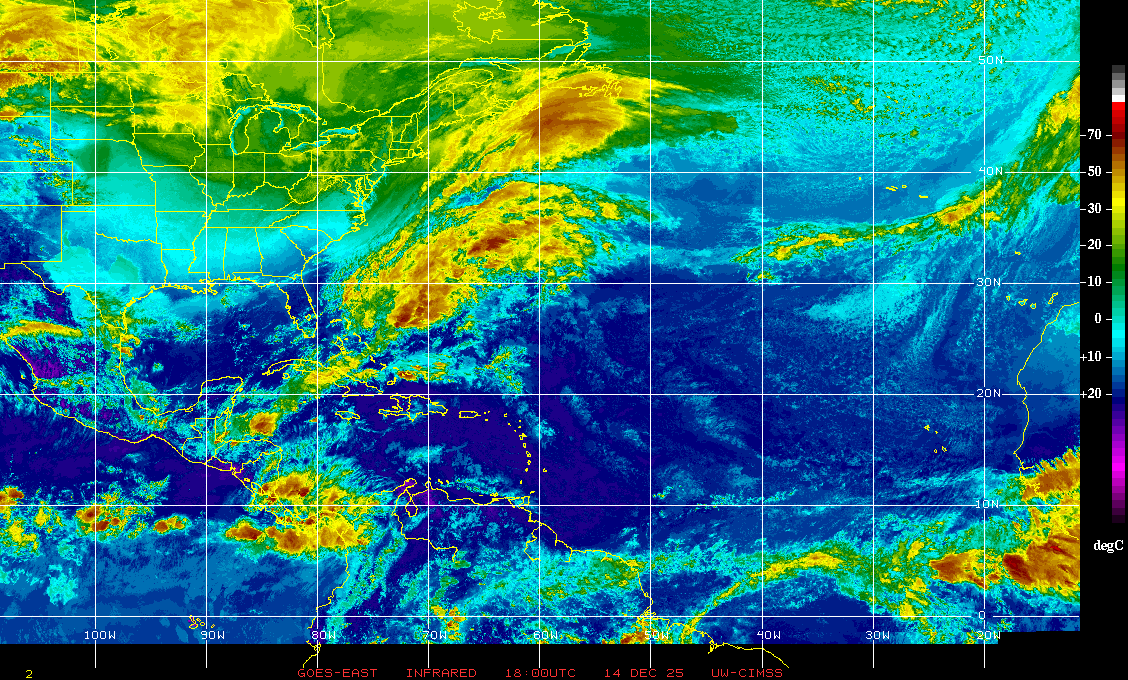

















:quality(70)/cloudfront-us-east-1.images.arcpublishing.com/cmg/HJ3L3HBBJBH6PB5ZFB3SVGFXSU.png)
:quality(70)/cloudfront-us-east-1.images.arcpublishing.com/cmg/4TQDXERT5VGORNZ4NQWXNO5H64.png)
:quality(70)/cloudfront-us-east-1.images.arcpublishing.com/cmg/SKX4RKW645ERTATCLA4V2FVRKQ.png)
:quality(70)/cloudfront-us-east-1.images.arcpublishing.com/cmg/5PIZRG7NYBAHDDABTG5BNVGO6Y.jpg)
:quality(70)/cloudfront-us-east-1.images.arcpublishing.com/cmg/V7JDMMD6JJEEHIL6C7OSLV3ABU.png)
:quality(70)/cloudfront-us-east-1.images.arcpublishing.com/cmg/WA5FNXO2RGWUZ6ETRASHYWTFTU.jpg)
:quality(70)/cloudfront-us-east-1.images.arcpublishing.com/cmg/NNKCBGCDIZSDZMFAOUGJRLR7F4.jpg)
